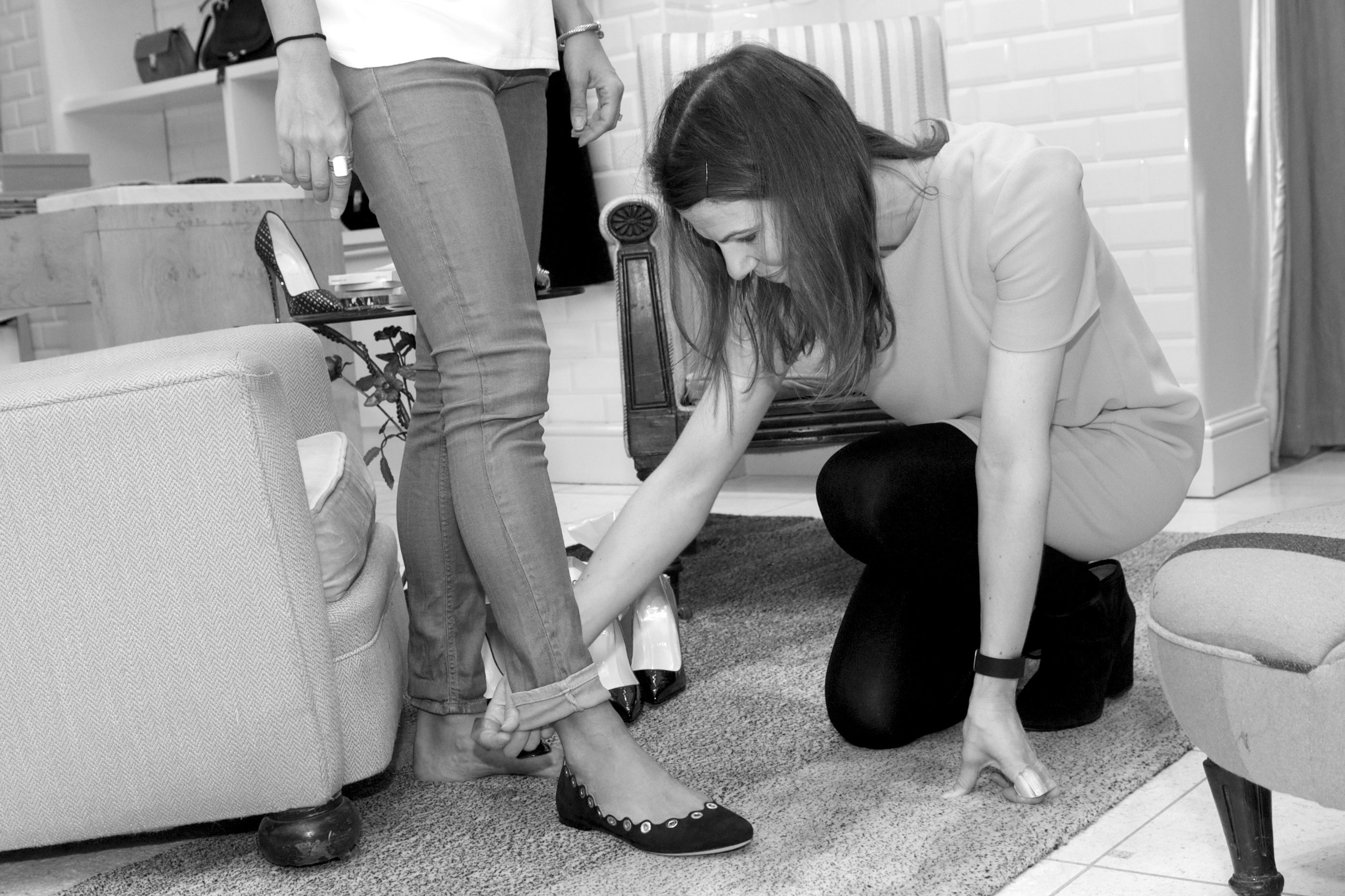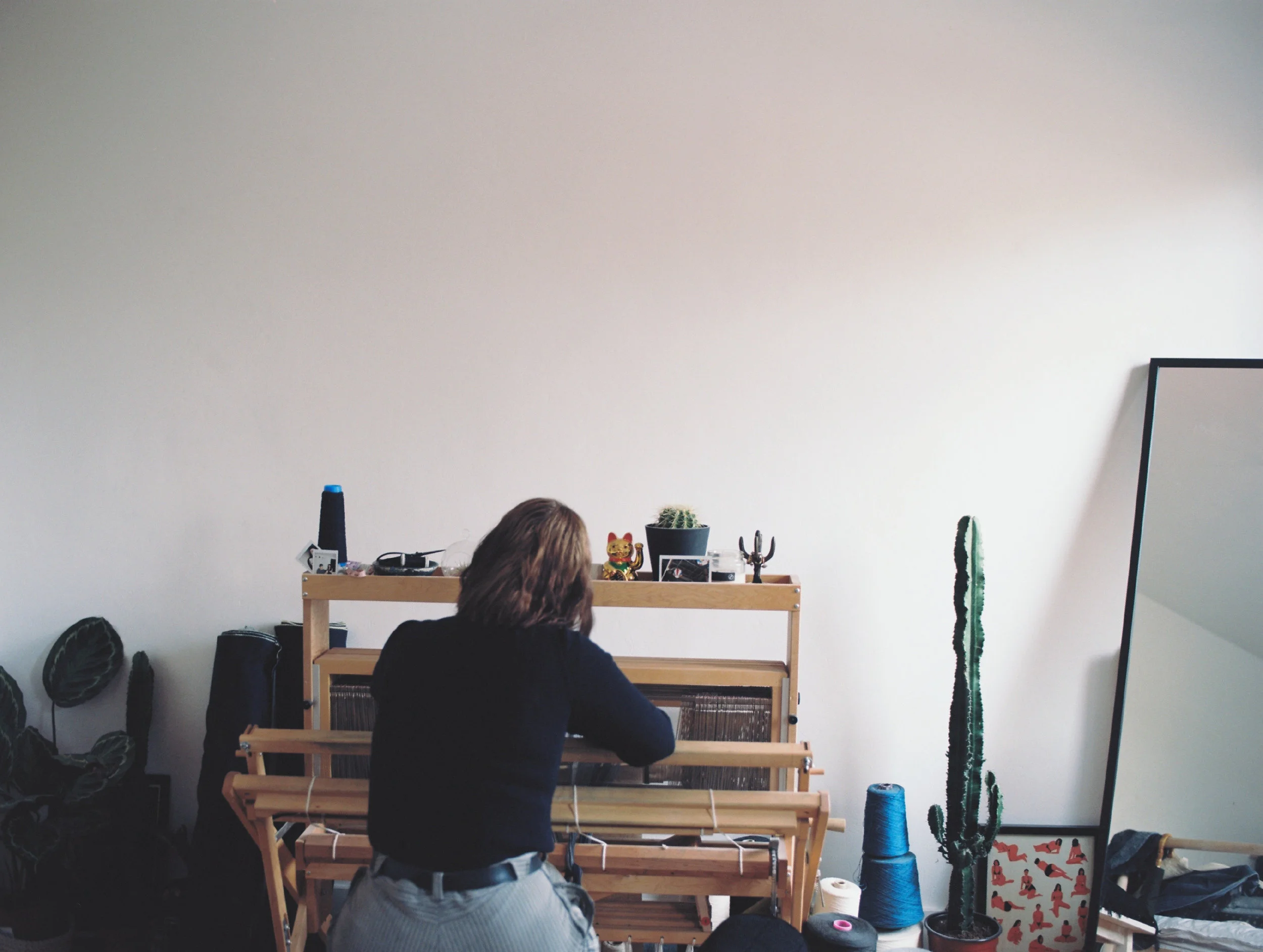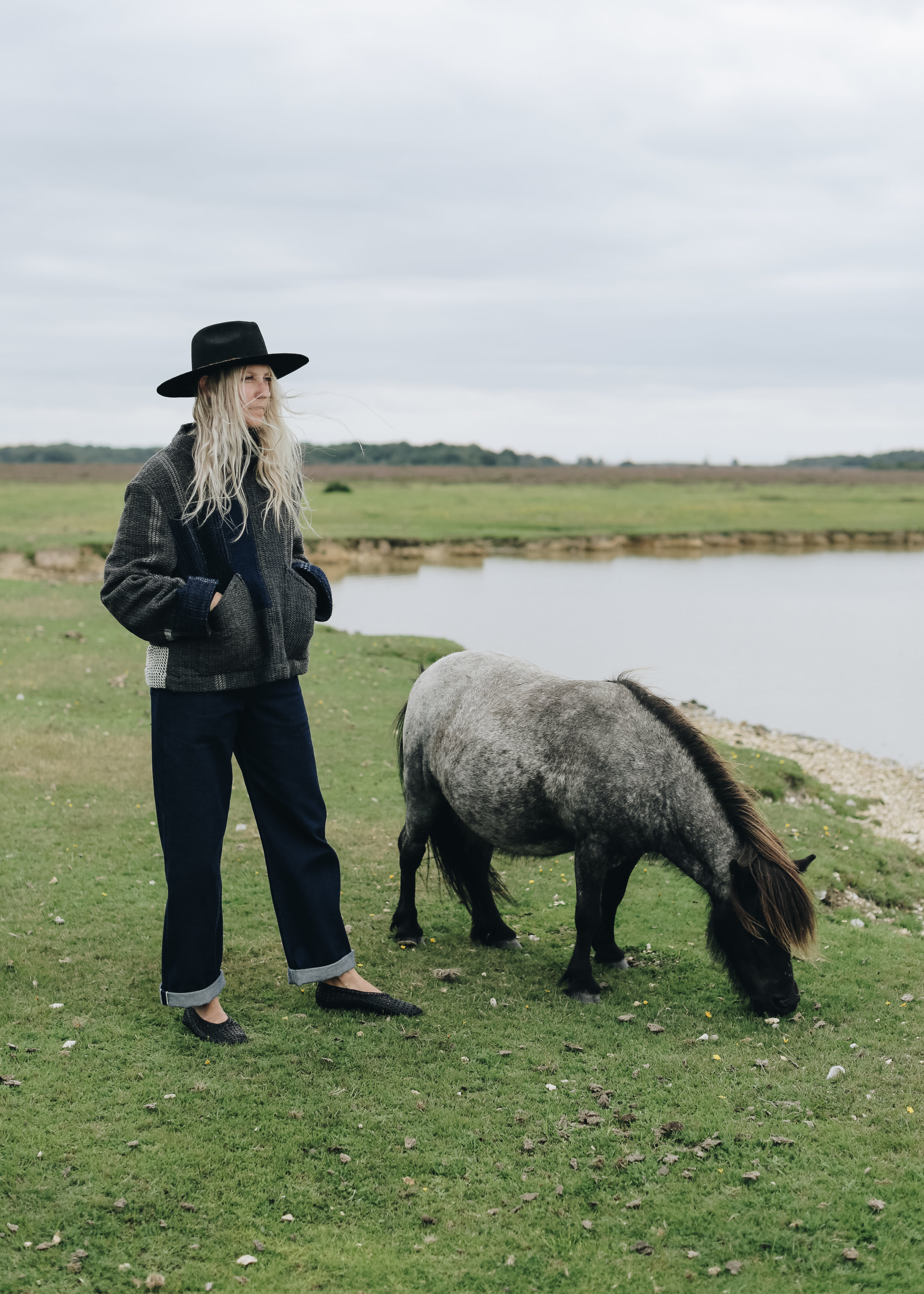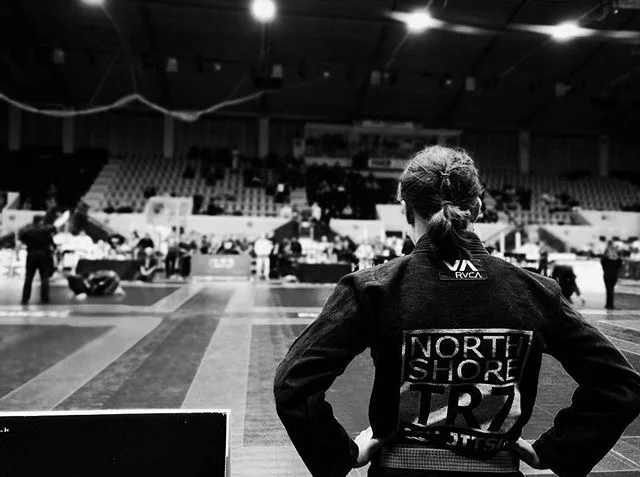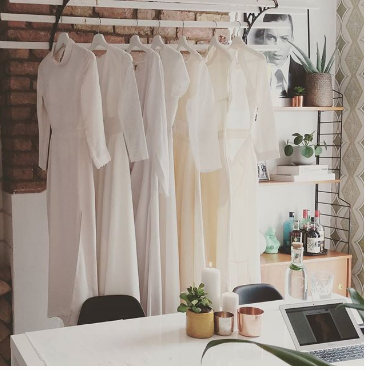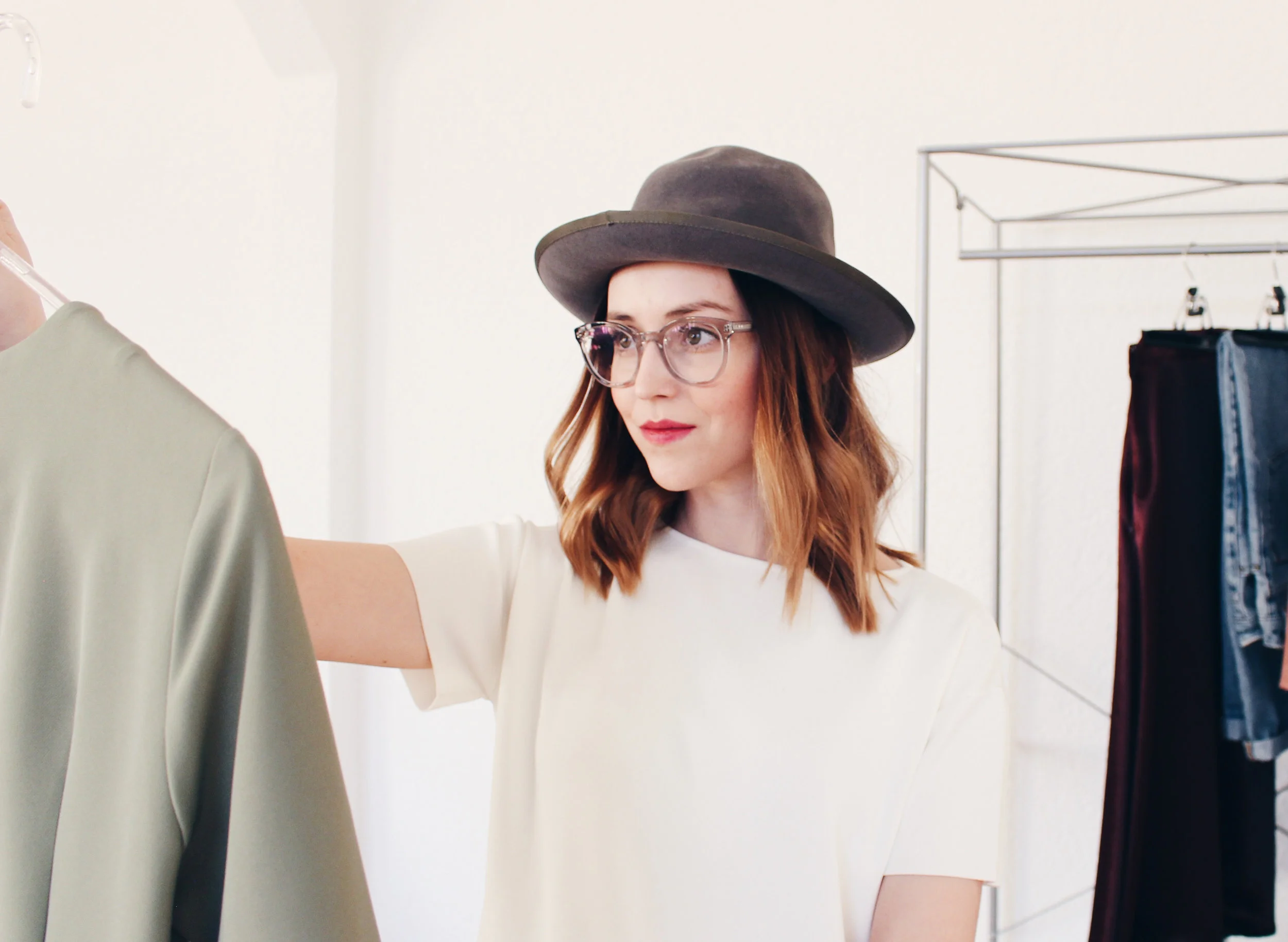The next interview in my Fashion Insiders Series, with former fashion buyer Anna Berkeley, has come along at the perfect time for me as I’ve been thinking a lot recently about the changes in my own life since I started out on my own this year.
Anna’s worked in the fashion industry for over 20 years and in that time she’s been a buyer at the likes of Selfridges, Prada, Reiss, Margaret Howell and is now is now a successful style consultant and range planner. I found it fascinating hearing about how she got to this point in her career.
Hearing stories like Anna’s and my own experience of this year has helped me see that life isn’t always a straight path but more like a river that meanders to new places, bringing with it new opportunities. I’ve also been getting very philosophical in the last year or so, in case you hadn’t noticed! Lol!
Hi Anna, thank you for taking the time to talk to me today!
You do a number of different roles in your life - including working as a stylist, fashion writer and buyer. When did you know you wanted to work in these roles?
I have to admit I didn’t truly work it out until my 3rd year at university. I took my favourite subject (history) as I really didn’t know what else to do aged 18! I then did a summer job at Topshop and thought, this is it! I want to work in this world. I had always loved fashion and shopping growing up but never dreamed I could make a living out of it.
Please, can you tell me a bit about your career so far?
Once I had decided it was fashion I wanted to get into I researched all the different roles. I alighted on buying. It really excited me. It was very difficult to get into and I entered sideways as an allocator for Wallis. This sits in the merchandising function, not buying, but was a perfect place to start to learn how the retail world operates. I was basically responsible for sending out the stock, monitoring it and doing transfers. It’s a vital role and I relished the analysis side of things especially. I have to admit I wasn’t very good at it!
I then took a job as a Buyer’s Clerk at Faith Footwear (which was huge then!). Again this was a starter role but I learnt all the grassroots jobs and began to really grasp what made commercial sense. I began to do some buying and then got my dream role as an Assistant Buyer at Selfridge’s department store. I started in menswear and then moved to women’s. I was responsible for the denim room, the casual area and then moved into designer wear and millinery.
It was a brilliant time. I attended all the shows all over the world and had huge autonomy. I then worked briefly for Prada. It was an amazing experience seeing how the luxury market worked and the difference between working multi-brand versus single brand.
I then moved to Reiss to be Head of Buying. This again was a huge learning curve and totally different to all the roles I had had previously. I worked closely with the in house design team seeing sketches and toiles for the first time. I adored that process and the honour of seeing sketch to shopfloor all the way through. By this time I had worked for ten years in buying and was thinking about my next move.
I took a break and trained as a stylist as I wanted to run my own business and help other women navigate the choppy waters of style! I then got pregnant with my first child and styling enabled me to work around him as well as a consulting role for the award-winning designer, Margaret Howell. I did all their womenswear buying for a few years and then moved to range planning and helping with concessions.
What skills do you feel are key to what you do?
For buying you need to be numerate, analytical and resilient; have strong stamina, be hard-working, good at negotiating and possess a natural eye for the right pieces. Not the pieces you like, but the pieces that the customer wants. Range planning requires many of the same skills but is more analytical. In styling, I believe you need to be a good listener, empathetic, energetic, enthusiastic and kind. You need to be really interested in people and create strong relationships with retailers and clients alike.
What’s the most satisfying thing about what you do?
The wonderful, wonderful people I work with. Being invited into people’s homes and wardrobe’s is a magical thing. Being able to help someone transform themselves or dig them out of a style rut and make them feel better is so rewarding. Finding the right pieces that you know a client will love is very similar to what I enjoyed about buying. Seeking out the best items and using all the knowledge and experience I have gathered over the years feels really good. I never tire of it.
In terms of my consultancy work there really is nothing better than seeing all the outfits you have worked with over 6 months come to life on the catwalk, the campaigns and the company lookbooks. The designers are the real stars but I have a hand in making the range commercially successful and that’s fabulous to me.
What do you do every day? What does a typical day look like?
Every day is different. I could be scouting for a personal shopping session, clearing out a wardrobe, planning next season’s range, looking at toiles or doing a colour analysis.
What advice would you give someone wanting to do what you do?
Immerse yourself in the fashion world. Ask questions and start right at the bottom, with humility, and learn everything you can about the business from all angles.
Where do you go to keep up with current trends?
Stores, Instagram and Vogue.com
Has the importance of catwalk trends changed over the years? Are there other more important influences these days?
Street style.
What ambitions do you have in your role?
To help as many women as possible to fulfil their potential and look and feel great in what they wear.
What kind of satisfaction do you get from your roles? For instance, how does it feel when you are featured in publications you admire or when you work with a client?
It’s a wonderful buzz and I feel very grateful.
Is there anything that has inspired or guided you in getting you to where you are today? For instance a book, tool, approach to life or a saying?
Just do it!
How do you keep a balance in your life?
I have two boys, Sam and Jesse, so being mum as well as running my own business and consulting is really tough sometimes. I love all my roles so I’m incredibly lucky. Yes, I do feel under pressure at busy times. I relax by taking long baths, reading, walking and getting outside as much as possible.
What are this seasons most flattering trends?
Velvet and cord are very flattering next to the face!
What are your top trends for Christmas this year?
I’m still very taken with head to toe velvet, a suit preferably. Or the amazing pink sequin dress by Preen for LK Bennett.
Do you have any tips for Christmas dressing?
Make sure it’s comfortable. When trying on -sit down, stretch, move around, reach up and ensure your outfit doesn’t pull or dig in.
What’s the one thing we should be investing in now for SS18?
Souped-up trainers
Contact Anna via email at anna@annaberkeley.com
Anna's website: annaberkeley.com
Anna's Instagram: @annaberkeleystyling





